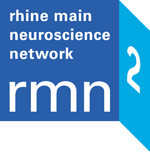Science
Expertise in all fields of Neuroscience
That drives us
From the study of single cells, to organisms such as zebrafish and mice, through to human behavior, we are trying to understand understanding.
Molecular and Cellular Neuroscience
Research groups in the molecular and cellular neurosciences are broadly represented in the faculties of the natural sciences in Frankfurt, Mainz and Darmstadt, the University clinics in Frankfurt
and Mainz, the Leibniz Institute for Resilience Research (LIR, Mainz) as well as in the Max Planck Institute for Brain Research (Frankfurt) and the Institute of Molecular Biology (IMB, Mainz). They investigate individual elements of neural circuits (proteins, spines, synapses, neuron) and how these circuits execute particular functions to regulate the flow of information necessary for cognitive performance. This research focuses, e.g., on calcium (Ca2+), chemical, and electrical signaling and neural stem cells.
Systems and Cognitive Neuroscience
Systems Neuroscience studies how individual neurons and their components form networks, and how the structure and function of these neuronal circuits contribute to a wide range of brain functions, including perception and behavior. Systems Neuroscience often uses animal and cell models and sophisticated measurement tools such as in vivo 2-photon microscopy, electrophysiological depth recordings, optogenetics and imaging of voltage sensitive dyes. These physiological approaches are complemented with anatomical techniques which allow for the visualization of the underlying anatomical network architecture.
Computational Neuroscience
Computational Neuroscience uses mathematical modeling to understand ‘neural algorithms’, i.e., the nature of neural representations (of, e.g., a sensory stimulus or an internal state) and the transformations between different representational states (like perception) in the brain.
Clinical and Translational Neuroscience
Clinical Neuroscience uses neuroscientific methods to uncover mechanisms in Central Nervous System Diseases (CNS disorders) as well as to facilitate the translation of neuroscientific research to the treatment of patients.
At both, the Medical Faculty of Mainz and Frankfurt, Clinical Neuroscience is represented by the Departments of Neuroradiology, Neurosurgery, Neuropathology, Neurology, Clinical Pharmacology, Otorhinolaryngology, Child and Adolescent Psychiatry and Psychotherapy as well as Psychiatry and Psychotherapy.




